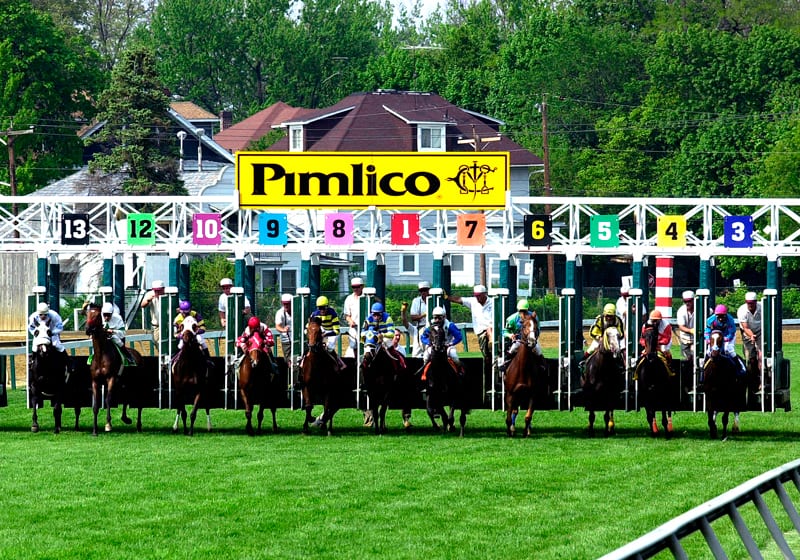
They’ll be off at Pimlico on April 2 for the spring stand. Photo by Jim McCue, Maryland Jockey Club.
by Frank Vespe
The Maryland Jockey Club received permission today from the Maryland Racing Commission to offer a new Rainbow 6 wager at the upcoming Pimlico meeting.
The wager, modeled after the similarly named bet made popular by Gulfstream Park, will pay in its entirety only to a single, unique winning ticket. If no ticket has all six winners in the sequence — or if multiple tickets do — then 60 percent of the pool will be paid to the players who hit all six (or were “best of”), with 40 percent to carry over to the next day. The entire amount, including carryover, must be paid out on closing day.
The wager will have a 20 percent takeout and a minimum wager of 10 cents.
“The Rainbow 6 has been ultra-successful at Gulfstream,” said Maryland Jockey Club vice-president and general manager Sal Sinatra. “I figured the best meet to bring it here was Pimlico.”
Of course, the introduction of a Rainbow 6 renders the MJC’s current Jackpot Pick 5 unnecessary. Instead of carrying two jackpot wagers, the MJC will replace the Jackpot Pick 5 with a straight Pick 5, paying out to all players who correctly pick all five winners.
Key features of the Pick 5: a 50-cent minimum wager and a low 12-percent takeout. The to-be-mothballed Jackpot Pick 5 had an 18-percent takeout.
Sinatra said that he believed one of the factors that has helped Gulfstream’s handle on the Rainbow 6 is its “very good field size.” With turf season set to start at Pimlico, he’s hoping to mirror those big fields.
“So I’m going to turf season, so that’s the time to really try this, in my opinion,” he said. “Winter’s tough – you don’t want people to do all this work and then cancel, cancel, cancel.”
Indeed, you don’t, and that points to one of the key reasons to introduce a Rainbow 6, Sinatra said. Big carryovers may attract players who don’t normally wager on Maryland’s product; even if they lose early in the multi-race sequence, they may have scoped out other angles to play on later races.
Sinatra echoed earlier statements from Tim Ritvo, the chief operating officer of the Stronach Group, which owns the Maryland Jockey Club, that the company is aiming to reduce takeout at the tracks.
“I’m still looking at wagering takeout and looking at Laurel fall,” Sinatra said. “I’m still running the numbers. Right now we’re stuck in the [Horseplayers Association of North America] ratings at 45 or so; my goal is to get in the top 15.”
Sinatra said that he believed reducing takeout immediately before the Laurel fall meet — which typically kicks off a six-month stand at the track — made more sense than, for example, doing so heading into Pimlico, which is just a two-month meet followed by a two-month break. “I want to get a little momentum going,” he said.
As for one factor that can be a challenge to reducing takeout — the reluctance of horsemen concerned about how it can affect the purse account — Sinatra said that had not been a problem in adding the low-takeout Pick 5. “They’re true partners,” he said.
He added that Dale Capuano, a board member of the Maryland Thoroughbred Horsemen’s Association, had put it aptly. “He said, ‘We’re a gambling industry. I’m willing to take the gamble,'” Sinatra said.








More good things to bring more excitement to Maryland racing, this along with the improvements at the tracks, keep up the good work.